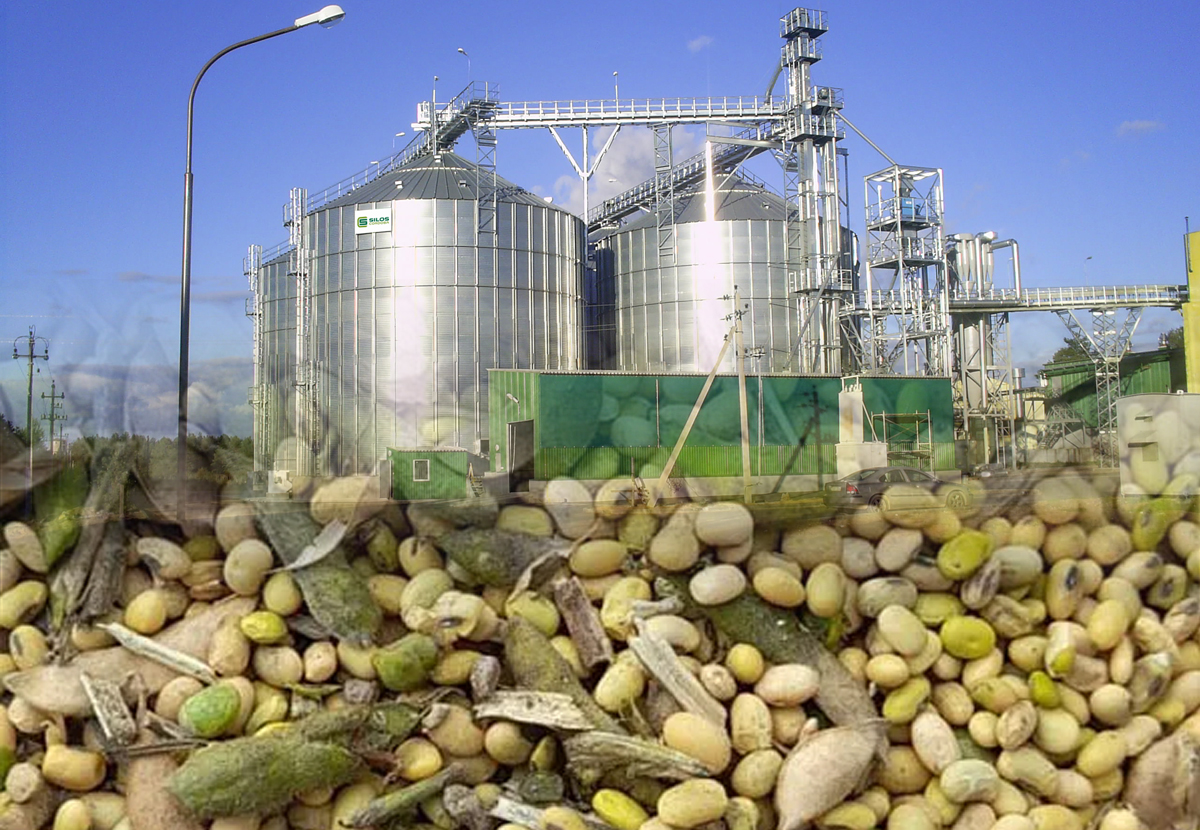In the previous article dedicated to food security, we discussed how grain storage plays a decisive, though often overlooked, role in ensuring the availability and quality of food. One of the key points addressed was the impact of post-harvest losses, especially in regions with limited infrastructure.
In this new article, we delve deeper into how proper grain handling after harvest and the use of appropriate storage technologies, such as metal silos, can significantly reduce these losses and preserve grain quality throughout its storage life.
The Challenge of Preserving Grain After Harvest
Once harvested, grain begins a natural respiration process that, if not properly managed, can accelerate its deterioration. This phenomenon generates internal heat and moisture, creating ideal conditions for fungi, insects, and unwanted fermentation. In just a few days, both the volume and nutritional or commercial value of the grain may be compromised.
According to the FAO and various regional studies, post-harvest losses can reach 30–40% in some parts of the world. These losses are classified as:
- Quantitative: direct loss of grain volume.
- Qualitative: loss of quality, food safety, or market value.
From Field to Silo: Key Steps for Effective Storage
An efficient storage system begins even before the grain enters the silo. These are the critical stages of the post-harvest process and how each helps minimize losses:
1. Reception and Analysis
Before unloading, representative samples must be taken to assess moisture content and temperature. These data help determine whether the grain requires cleaning, drying, or other pre-storage treatments. In this phase, aspiration systems, mandatory in some countries, help maintain hygiene, prevent dust buildup, and protect storage facilities.
2. Cleaning
Removing foreign materials such as dust, straw, stones, or undesired seeds is essential. These residues can:
√ Hinder uniform drying.
√ Obstruct ventilation systems.
√ Promote moisture accumulation and microbial growth.
Proper cleaning ensures homogeneous conditions for subsequent stages.
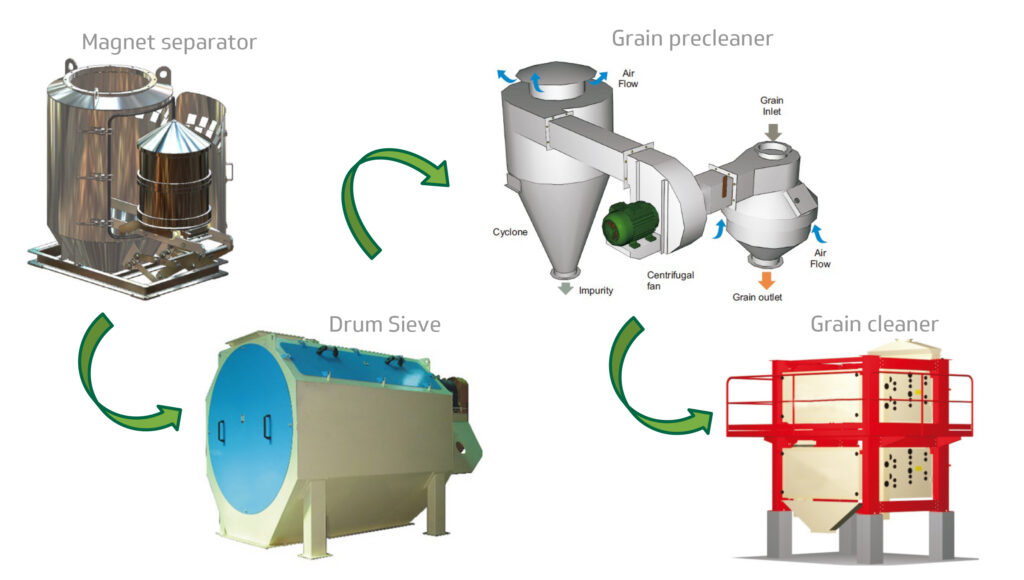
3. Buffer Silos
When cleaning capacity exceeds drying capacity, buffer silos allow temporary storage of clean grain. Equipped with ventilation and extraction systems, they help prevent uneven drying and support FIFO (first-in, first-out) flow, ensuring consistent grain rotation.
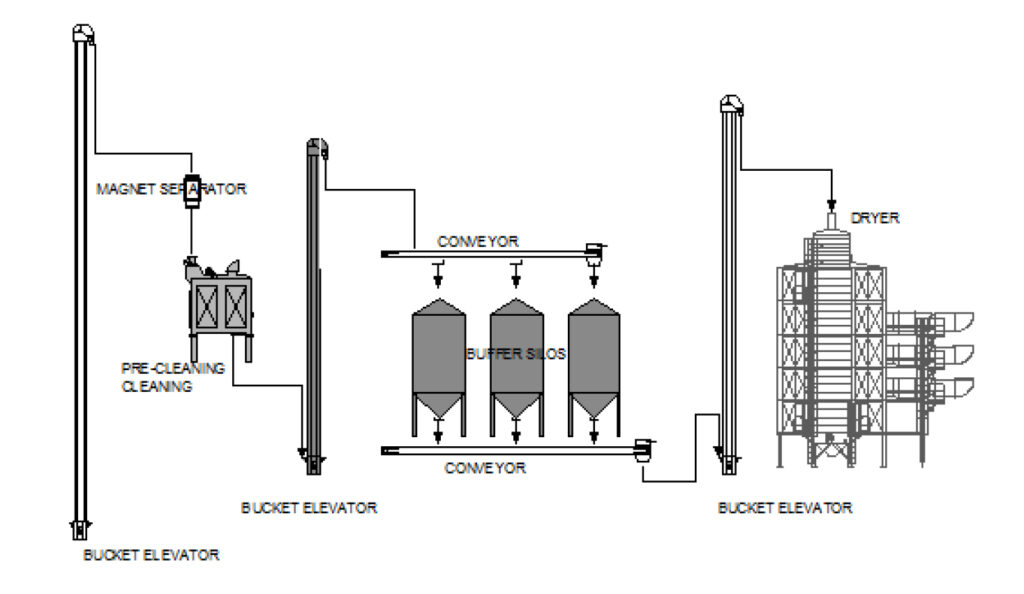
4. Drying
Reducing grain moisture content is essential to prevent fermentation and microbial growth. Key recommendations include:
♦ Do not exceed 43 °C for seed grain.
♦ Do not exceed 60–65 °C for grain intended for consumption.
♦ Avoid mixing wet and dry grain.
♦ Limit moisture reduction to 5% per cycle.
♦ Allow the grain to rest 8–12 hours between drying cycles for internal moisture stabilization.
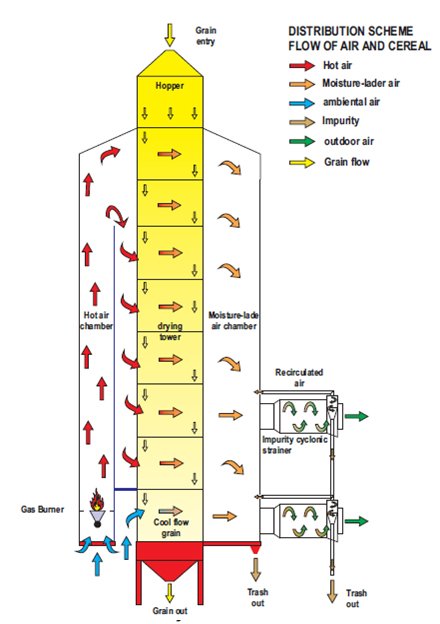
5. Cooling
This step is particularly critical in hot and humid regions and can be performed either within the final storage silo or using dedicated cooling silos, designed to ensure uniform temperature throughout the grain mass. These systems feature:
◊ High-efficiency ventilation.
◊ Automatic temperature control.
◊ Adaptability to tropical climates where natural ventilation is insufficient.
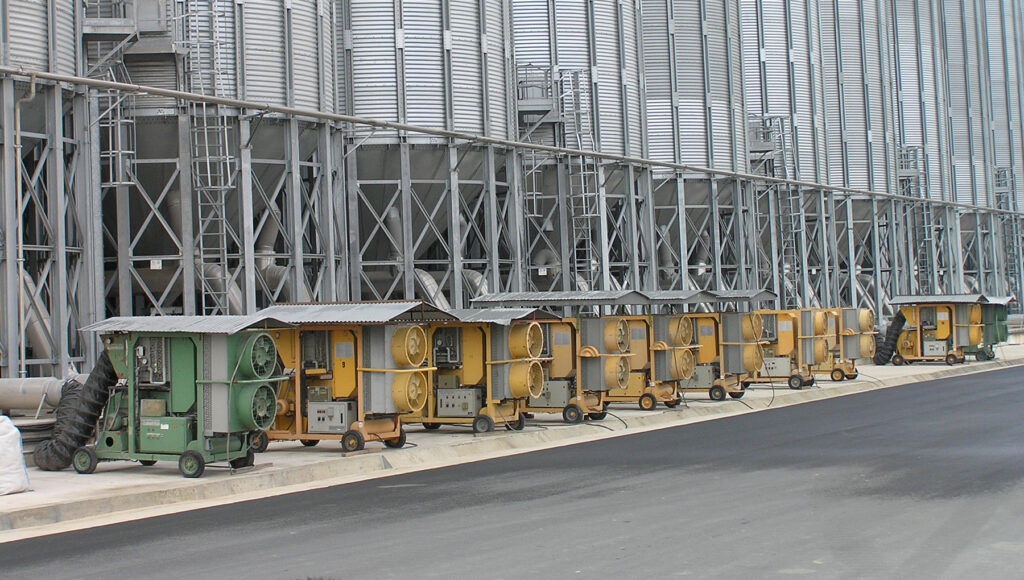
6. Monitoring and Control
Ongoing monitoring is vital to detect anomalies early. A well-designed storage system includes temperature sensors, air extractors, ventilation grilles and well-distributed airflow routes. This allows for preventive action and optimal grain conservation.
Technology Serving Food Security
At Silos Córdoba, we offer integrated solutions covering all these stages: from grain reception and cleaning to drying, cooling, and monitored storage. Our systems are designed to adapt to various capacities, grain types, and climate conditions, enabling our clients to:
√ Minimize post-harvest losses.
√ Preserve grain quality and nutritional value.
√ Optimize logistics and crop rotation.
√ Reduce waste and related emissions.
In many regions, traditional methods such as storage in warehouses, jute sacks, or makeshift structures are still in use. While accessible, these approaches are highly vulnerable to losses. Modernizing with metal silos equipped with ventilation, monitoring, and thermal control represents a strategic investment toward more efficient, profitable, and sustainable food production.
Every Ton Properly Stored Is a Ton Saved
With the global population expected to reach 10.5 billion by 2050, the challenge is not only to produce more, but to preserve better. Investing in efficient storage means investing in food security, sustainability, and resilience.
At Silos Córdoba, we understand that storage is not just a matter of infrastructure, it’s a key component of a global food security strategy. We help ensure that every harvested grain reaches its destination in optimal condition, reducing waste and reinforcing the sustainability of the agri-food system.
Because storing well means feeding better.
Further information is available in our presentation: “Storing Grain to Reduce Post-Harvest Losses and Protect Its Quality.”

